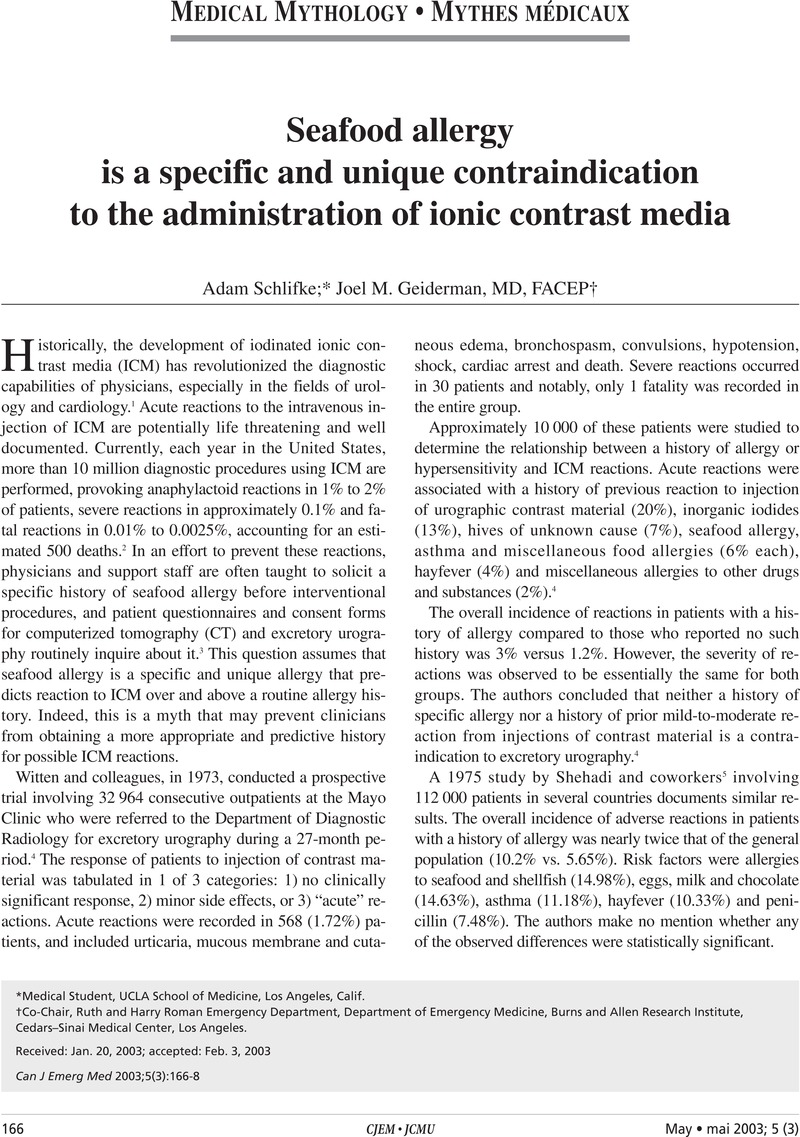Crossref Citations
This article has been cited by the following publications. This list is generated based on data provided by Crossref.
Buttaravoli, Philip
2007.
Minor Emergencies.
p.
771.
Buttaravoli, Philip
and
Leffler, Stephen M.
2012.
Minor Emergencies.
p.
746.
Leow, KS
Wu, YW
and
Tan, CH
2015.
Renal-related adverse effects of intravenous contrast media in computed tomography.
Singapore Medical Journal,
Vol. 56,
Issue. 04,
p.
186.
Jamioł-Milc, Dominika
Biernawska, Jowita
Liput, Magdalena
Stachowska, Laura
and
Domiszewski, Zdzisław
2021.
Seafood Intake as a Method of Non-Communicable Diseases (NCD) Prevention in Adults.
Nutrients,
Vol. 13,
Issue. 5,
p.
1422.





